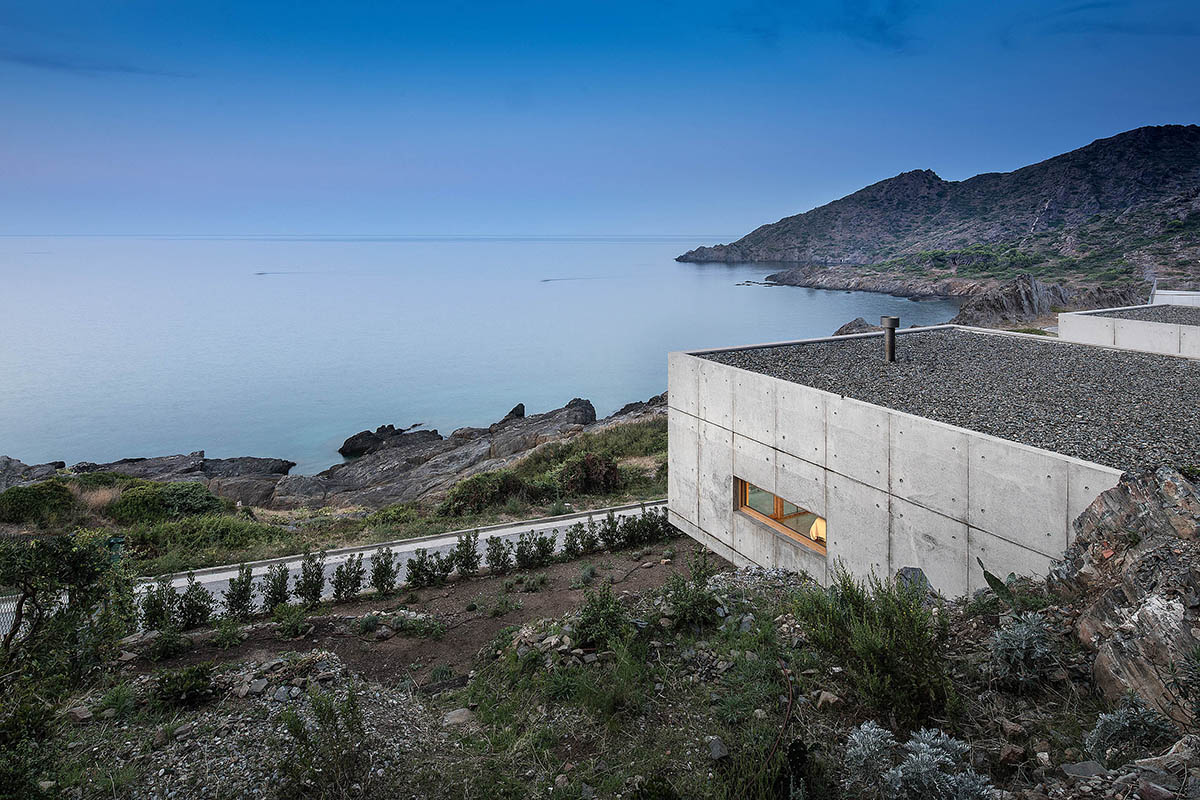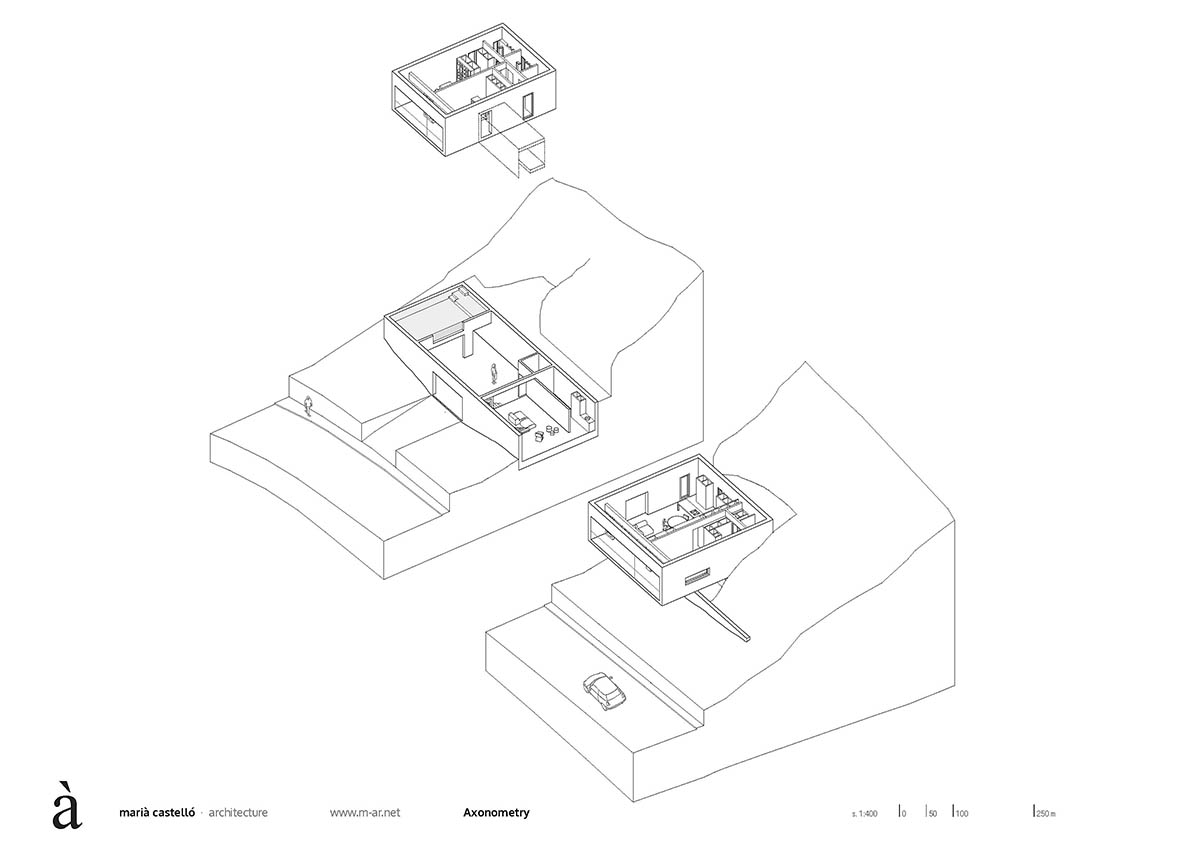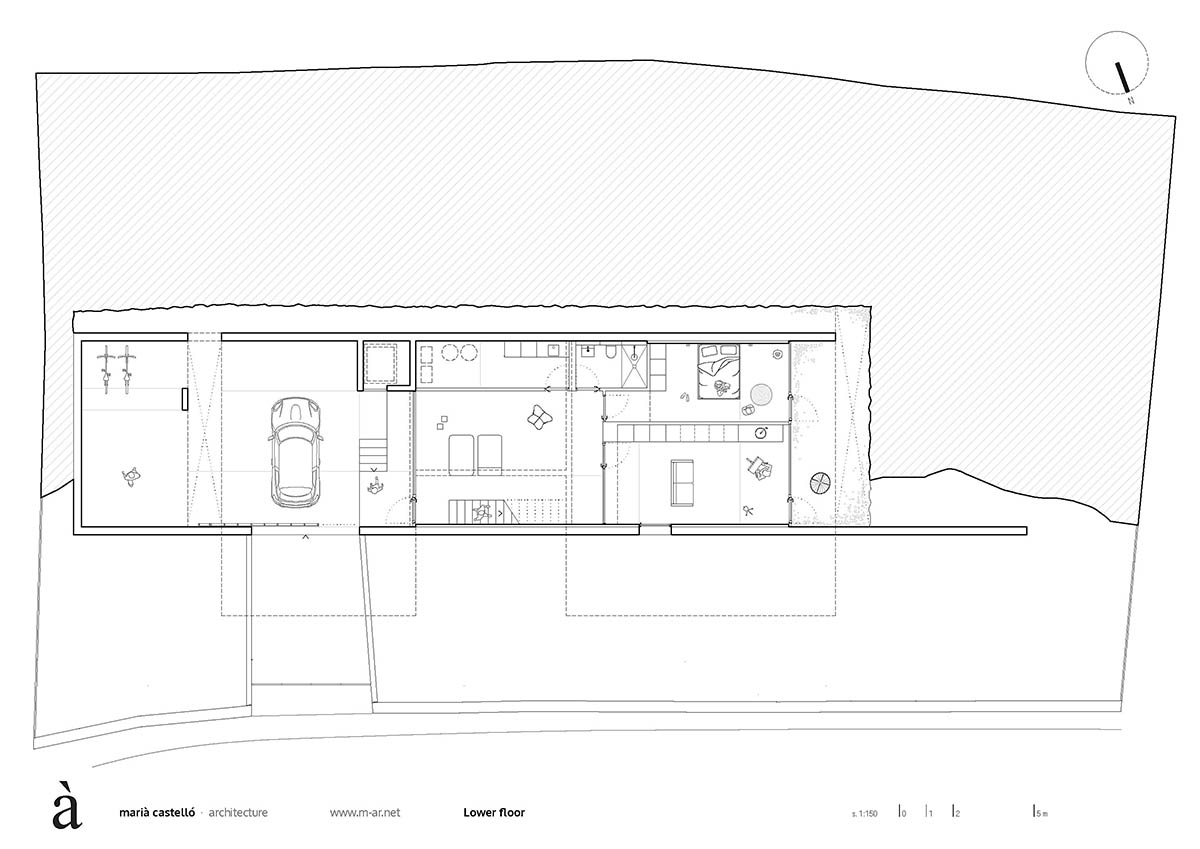Submitted by WA Contents
Marià Castelló Architecture completes family house with on a hilly topography in Spain
Spain Architecture News - Feb 18, 2022 - 14:19 2759 views

Formentera-based architecture studio Marià Castelló Architecture has completed a family house in the northernmost part of the Costa Brava, Spain.
Named Port de la Selva, the 310-square-metre house was designed for a family who have four children. The house is blended into the existing hilly and rocky topography of the site and captures views towards the sea with its elevated structure.

The house is divided into three main parts: an elongated concrete volume is embedded into the natural topography, while two other separate concrete volumes are placed on top of the lower volume. Upper volumes, focusing on the views, are connected through a transparent hallway.

The project is located on a plot of land in the “La Tamariua” urbanization on the north slope of Puig Gros, a small promontory that surrounds and protects the town’s port.
"The topography presents a pronounced slope towards the sea with abundant outcrops of “pòrfit”, a dark and very hard rock that characterizes the geology of volcanic origin of the place," said Marià Castelló Architecture.
"The climatic conditions are typical of the Mediterranean climate, although sometimes they become extreme, with strong winds from the north (Tramuntana) that frequently hit the coast."

The architects created a tension between the optimal solar orientation and the deep panoramic views which makes up the program of the house. While the lower one is embedded in the bedrock and the upper one is fragmented into two volumes.
According to the studio, "this combination of strategies (embedding in the ground and volumetric division) makes it possible to reduce the apparent volume of the intervention and improve its integration into the landscape, as well as generating different patios that provide warmth, lighting and ventilation at strategic points."

The team added that "The interstices between the rocky “pòrfit” substrate and the architecture become the most lyrical moments of the proposal and where you most want to be."
The lower level is designed almost at street level, which provides more intimate relationships with the outside. This is achieved through patios, on the upper level the two volumes are opened towards the landscape and the sea horizon.

At the top level, the architects designed more private areas that are generated between the volumes and the rocky substrate that surrounds them. The upper volumes include two bedrooms, kitchen and a master bedroom.
The team created a glass nexus, which connects the two concrete volumes and contains the vertical communication. This also acts as a screen against the wind and generates an exterior space sheltered from the prevailing wind but visually permeable towards the sea.

"This in turn is capable of receiving correct sunlight during the winter months, as it is also oriented to the south," added the firm.
From a tectonic point of view, the architects used concrete as a predominant material both outside and inside, given that its stony nature establishes an intense dialogue with the rocky substratum of the place.

Likewise, its resistance to inclement weather (strong winds and marine environment) make it one of the most durable options, with little maintenance and, therefore, more sustainable.

Also outside, “pòrfit” gravel from the emptying of the excavation has been used to finish the roofs and the interstitial patios between the intervention and the bedrock.
To compensate for the intrinsic qualities of concrete, oak wood has been chosen to materialize the exterior carpentry, some cladding, custom-made furniture, etc., providing the whole with warmth and harmony.














Location plan

Axonometric drawing

Lower level plan

Upper level plan

Roof floor plan

Section

Section

Section

South elevation

East elevation

North elevation
Marià Castelló Architecture previously designed a private residence on Formentera island, Spain. The firm completed another family house on the Ibiza island, Spain.
Project facts
Project name: Port de la Selva
Architecture: Marià Castelló Architecture
Architects: Marià Castelló + José Antonio Molina
Location: Punta Creu 15. Port de la Selva. Spain
Construction Managers: José Antonio Molina + Lorena Ruzafa + Marià Castelló
Building Engineer: Joan Noguer
Structure Engineer: Think Enginyeria SLP
Facilities Engineer: QS Enginyeria i Associats SLP
Design Team: Lorena Ruzafa y Marga Ferrer
Builder: Construccions Pòrfit
Project: 2016-19
Building process: 2019-2021
Area: 310 m2
All images © Marià Castelló
All drawings © Marià Castelló Architecture
